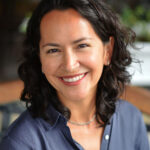The Future of Medicine
The Limitations of Concrete: Disease Is a Verb, Not a Noun
Getty/FANDSrabutan
Reality is constantly in flux. Life is ever-changing. Remembering that illness isn't a solid identity is a step toward embracing healing possibilities.
Marcy shuffled into my office, pleasant but with a weariness that was palpable. She chronicled her long medical journey to me. The dismissive attitude of her doctors, the laundry list of diagnoses given to her by other providers. She had tried dozens of alternative treatments over the last several years, but despite her efforts her debilitating symptoms prevailed.
I listened, observed, and felt into her pain. I held her in her wholeness. I asked her to imagine what if all of these past diagnoses were no longer true. What if all that were true is this immediate moment. What then from her own deep knowing needs attention and tending to in her own precious life.
“Don’t concretize your diagnosis” is a plea I often offer to my patients.
Physicians spend years learning to accurately diagnose disease. We are trained to assess an array of clinical findings and use that information to make a diagnosis that summarizes the complexity of a disease process in just a few words. But I have found this concept of concretizing illness to be detrimental to a patient’s healing. It assumes that the provider’s assessment is fixed and final, when in truth, the laws of physics show us that reality is constantly in flux, that life is dynamic and ever-changing.
Disease is defined as a condition of a living organism that impairs normal functioning. It is a process. More a verb than a noun. Yet this tradition of naming disease seems to cement disease into an object rather than an action. To concretize is to hold a notion, an idea, or a person as fixed and unmalleable. To concretize illness is to hold a conglomeration of clinical findings as a single, solid entity. This view limits our understanding of disease as a fixed state instead of as a flowing dynamic process.
In the practice of Innate Medicine, we offer to guide patients out of a fixed mindset of disease diagnosis into a more fluid understanding of probabilities and the wonder of outliers; possibilities such as disease reversal, radical remission, or simple disease resolution. When we first meet with many of our patients, we find that they are resigned to their given diagnosis. It is as if this named construct of disease has taken on a solid identity that they often view as an unwanted other, separate from themselves. They lack the ability to imagine something other than what was presented to them.
[Read “How Meditation and Mindfulness Help Ease Chronic Illness.”]
But when they are able to get out from under these fixed notions placed upon them, our patients discover the possibility of transformation.
In our practice, we discuss concepts like impermanence, quantum theory, and interconnection. We encourage our patients to apply these concepts to the living moment of their physical being. When we live from a place of immediacy, the solid construct of a disease diagnosis begins to crumble.
When we embrace the universal principle of impermanence, our death grip on life begins to loosen. And when we surrender to the constancy of change, we recognize the falsehood of anyone’s claim to certainty about the future. We can begin to hold a disease process with openness and curiosity. This understanding radically changes the proclaimed solidity of any disease diagnosis.
When I first begin working with patients, I review their lab results, imaging and pathology reports, and subspecialty consultations. My patients often seem surprised that despite this assessment of their clinical history, what I care most about is understanding who they are as a person. I invite them to share their passions, dreams, challenges, and fears. I inquire about what was going on in their life when their symptoms first appeared.
I wield my ability to diagnose with great care. Before naming a given disease state, I describe the phenomenon arising to my patients and help them understand their own physiology. I invite self-inquiry into why such impaired functioning may be arising. In our work together, we explore underlying disharmony within the entirety of their lives and tend to aspects of their being that are seeking care and attention. Judicious use of medications and other treatments are considered, but they are seen as supportive rather than as the means to an end.
Over a hundred years ago, William Osler, the creator of the first residency program for physicians, proclaimed, “The good physician treats the disease; the great physician treats the patient who has the disease.” With all of our data and diagnostic codes, we have lost sight of the person. But when we hold our bodily processes as dynamic and ever-changing, we are no longer at war with illness as a solid, fixed enemy. We can harness intrigue and curiosity as we delve into a deeper level of self-understanding and self-exploration.
We are no longer fighting against something. Instead, we begin flowing and awakening to all that we are.
Read more from Dr. Rangel: “How Feeling Your Feelings Can Teach You to Heal.”







